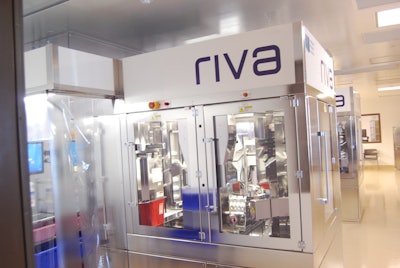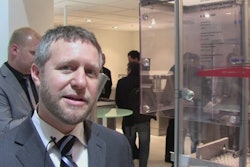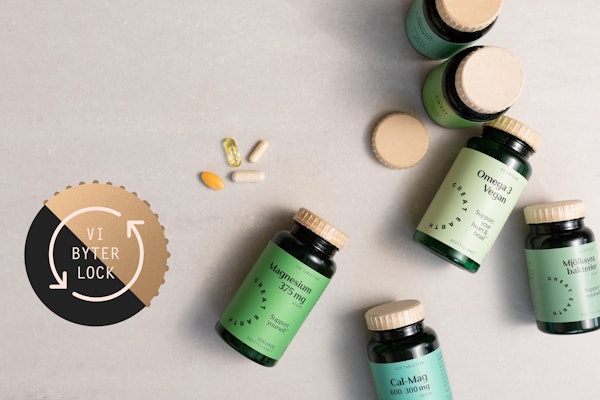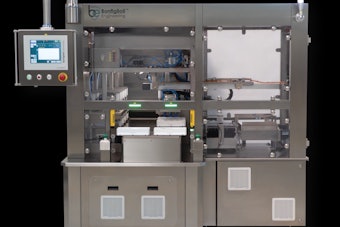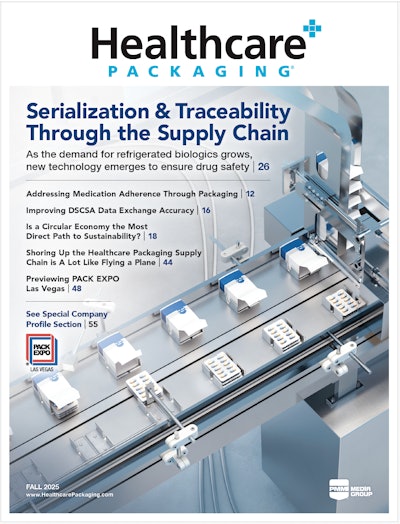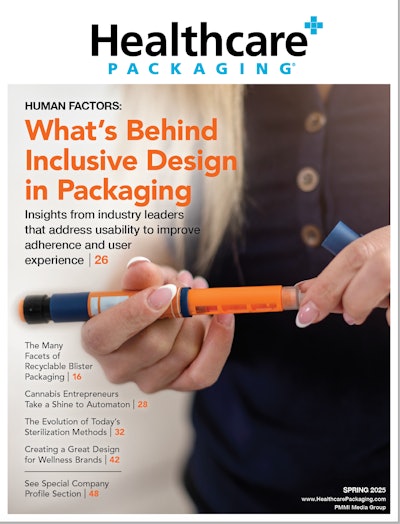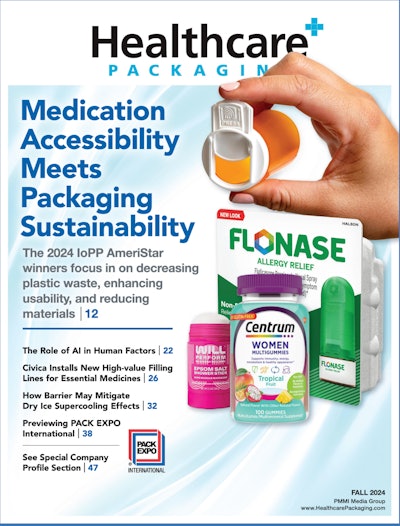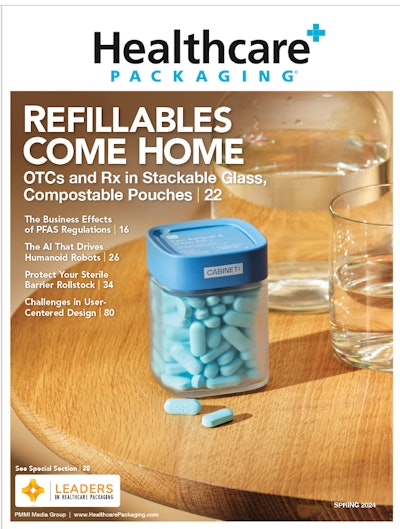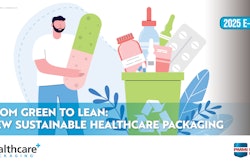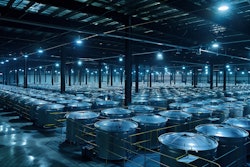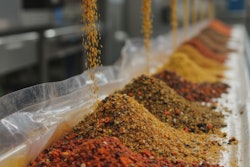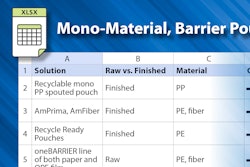When a GHS professional enters a patient order into the hospital’s pharmacy computer system, the order is transferred from that specific GHS facility to one of the RIVA systems from Intelligent Hospital Systems, Inc.
The automated system directs the RIVA to fill the script in a predetermined order that maximizes efficiency for GHS.
RIVA is available in a non-hazardous drugs-only configuration and one for use with hazardous drugs. The exhaust air handling system is the main difference between the two. High-quality air with low particulates is of critical importance in a hospital pharmacy environment where IV compounding occurs, in order to reduce the risk of microbial contamination of drugs. Richard Capps, GHS Pharmacy Manager, notes, “There are a lot of reasons we do not want a nurse to manually compound ingredients for a script on the fly within the nursing unit. With RIVA, we are able to prepare those items in a cleanroom within an enclosed environment providing laminar airflow and class 5 air. The environment is constantly monitored including continuous particle count monitoring.”
The primary part of the RIVA system is its cell. The cell has two distinct controlled air environments: The compounding area and the inventory area. Each area is fed HEPA-filtered air from fan filter units (FFUs) located in the ceiling of each area. In the compounding area, air flows downward and is collected by the peripheral return air duct at the bottom of the compounding area. The exhaust fan pulls return air through the exhaust air HEPA filter before it exits the cell. Airflow in the inventory area is similar, but is designed to allow inventory to be entered without introducing outside air. The compounding and inventory areas are kept at controlled pressure relative to ambient.
Air movement between the two sections is limited by the curved wall separating the two areas. Local return air “draws” control air flow patterns in specific areas—around the SMD and SMU needles, printer enclosure, and waste area. Two exhaust air handling options are provided. For non-hazardous drug applications, exhaust air can be recirculated into the surrounding area via a filter (re-circulating configuration). For hazardous drug (or non-hazardous applications if desired), all of the exhaust air is required to be fed into the hospitals duct work for subsequent routing out of the hospital.
Within different areas of the cell, RIVA has several major components that work both together and separately to fill IV bags and syringes. Two carousels are used to hold inventory racks. Each carousel contains spaces for 12 inventory racks, with 24 in total. Racks within the carousels hold inventory and consumable items required for admixture preparation.
GHS operators can access each of the two carousels by its own door. There are numerous rack configurations each designed to accommodate a specific set of consumables, including small syringes, large syringes, small vials, and large bags. The operator is responsible for loading and unloading racks as instructed by the system. Inventory racks are serialized and contain barcodes to identify the rack to the system. Each inventory carousel door resides within a vestibule area, fed by an individual overhead fan filter unit (FFU) supplying HEPA air to prevent contamination of the cell during loading operations.
Carousels rotate back and forth to present the appropriate rack to the compounding cell. Once the rack is in position, a robot arm removes the required item. In certain situations, carousels may hold racks that are used for temporary bag storage. The inventory carousels house the primary consumable inventory for the system.
A robotic arm moves inventory and consumable items around the compounding cell to the appropriate station or subsystem throughout the compounding process. The grippers on the arm also measure the diameter of vials and syringes to ensure the operator loaded the proper inventory or consumable item in the correct position.
A vial ID station contains several components that work together to ensure the identification of drug vials used in compounding.
A robotic arm places the vial on a rotating platen where a scanner reads the vial label and compares the information to prerecorded data in the system database. If the label matches the information that the system is expecting, the robotic arm moves the vial on to the next step in the compounding process. If the label does not match, the vial is rejected. At the same time, a camera takes several pictures of the drug vial label for quality control and reporting purposes.
A vial and bag height scanner measure the height of both vials and bags. If a vial or bag has the expected height, the robot arm moves the vial or bag on to the next step in the compounding process. If the vial or bag height is not correct, the vial or bag is rejected.
RIVA includes a patented and unique Port Disinfection System (PDS) that uses a high-intensity pulse of UV light to disinfect the critical sites on vials and bags. The system is designed to prevent UV light from coming in contact with vial or bag contents that may be light sensitive. Safety systems ensure that the UV light output is as desired, and that the vial or bag is in the proper location prior to the pulse.
A bag ID system uses a camera, scanner, and backlight to ensure the identification of IV bags used in compounding. If the barcode does not match, the vial is rejected.
The robotic arm places the bag in front of the backlight. The scanner reads the barcode on the bag and compares the information to prerecorded data in the system database. If the barcode matches the barcode that the system is expecting, the robot arm moves the bag on to the next step in the compounding process. If the barcode does not match, the bag is rejected. The Bag ID station also detects whether a RIVA label exists if an operator loads an intermediary bag instead of a diluent bag. At the same time, a camera takes several pictures of the bag label for reporting purposes.
RIVA uses two different scales to verify the weight of consumables at various points during the production cycle. The scales take preliminary weights of these items before admixture preparation and take post-weight measurements of the dosed items to ensure dose accuracy. One scale weighs both bags and vials, while a separate scale weighs syringes. The bag/vial scale contains three separate weigh areas, one vial and two bags positions and the syringe scale contains five positions for syringes. The scales have covers to minimize airflow disturbance and provide protection.
A decapper/deneedler removes the needle cap from a syringe prior to compounding and removes the needle from the syringe after dosing. Syringe needle caps and needles are discarded into a sharps waste container. The robot presents the syringe to the decapper/deneedler and performs specific motions to either remove a syringe cap or a syringe needle. A 2-gal sharps waste container located directly below the station receives the discarded caps and needles.
A Syringe Manipulator Down (SMD) station performs several actions during compounding. The SMD holds the syringe with the needle pointing down to do the following:
• Prime IV bags. Before use, an IV bag is primed at the SMD to ensure there is no air left in the bag.
• Reconstitute drug vials. After being weighed, a drug vial that requires reconstitution is moved from the vial scale by grippers on the SMD slider, - to the position beneath the syringe held by the SMD. The SMD slider then moves a diluent bag already present in the slider beneath the syringe needle in the SMD. The needle punctures the IB bag and draws a specific amount fluid into the syringe. The slider then moves the drug vial beneath the syringe needle held by the SMD. The needle punctures the vial and the SMD moves the syringe plunger down to add the diluent to the vial.
• Dose syringes. The SMD slider holds a diluent or intermediary container beneath the dose syringe needle held by the SMD. The needle punctures the bag and the dose syringe draws the required amount of fluid for the dose.
Two vial mixer stations are available for mixing of reconstituted vials. Each mixer can provide a number of desired agitation profiles (the forcefulness of the mixing action) for the desired amount of time.
A Syringe Manipulator Up (SMU) station doses both syringes and IV bags. When dosing syringes, the SMU holds the drug vial upside down in a set of grippers over the dose syringe. The dose syringe then punctures the vial and draws the appropriate volume of fluid. When dosing bags, the fluid transfer syringe draws with the appropriate volume of fluid from a vial. The arm then moves the dose bag over the syringe and the syringe punctures the bag. The SMU moves the syringe plunger up, forcing the fluid into the dose bag.
A capping station holds syringe cap trays. When a dosed syringe passes the weight accuracy check, the robotic arm moves the syringe to the deneedler/decapper to remove the needle from the syringe. The arm then moves the syringe over the cap tray at the capping station, forces the end of the syringe into a cap, and then moves the capped syringe on to the next step in the compounding process.
Operators place off-the-shelf trays of friction-fit luer-lock syringe caps into a special rack in one of the carousels. The robot takes these trays and places them in the capping station. A camera located above the station determines which caps are useable, and their exact location; two LED light bars provide the required camera lighting. RIVA’s software uses the image data to determine the precise location of each cap center and relays position offset data to the robot, which performs the syringe capping movement to apply the cap to the end of the syringe. Once the tray is empty, the robot places the empty tray in the waste chute and loads another full one.
RIVA uses two label printers, one for IV bag labels and one for syringe labels. Both printers are housed in an area that is effectively isolated from the compounding area from an air handling perspective. The labels are removed from the printer by a label shuttle that enters the printer enclosure. The shuttle receives the label and then exits again to bring the label into the compounding area where the robot can access the label with the syringe or bag. An external door allows access for changing of printer consumables.
An output scanner is a barcode scanner that ensures that the label printed by RIVA is readable. As a final confirmation, the system compares the printed dose serial number to that expected. If it matches, the dose can be output, if not, it is rejected.
An output chute is the apparatus that delivers the dosed and labeled syringes, dosed and labeled IV bags, and intermediary containers to a collection bin when compounding is complete. Two doors operate in sequence to ensure that there is no direct air path between the compounding area and the outside air. The operator is responsible for placing a suitable container under the output chute for completed product collection.
A waste chute is a door in the bottom of the compounding cell that leads to the solid waste bins beneath the compounding cell. The robotic arm moves all waste items above this door and drops the waste through the door and into the appropriate waste bin.
The waste chute provides air locked access to the cell’s primary waste containers. The interior door and the external waste access door act together to ensure minimal air movement between the compounding area and the outside of the cell. The waste area provides room for two 8-gal waste containers and a 2-L waste fluid container fed by the drip catcher on the SMD. Both of these container types use a level sensor to monitor the contents and alert the operator when the containers are full and require replacement.
Vestibules are contained areas adjacent to the carousel doors. They contain HEPA filtering and blowers that direct ISO 5 air over the operator and consumable items. Vestibules come in two configurations: Curtain vestibule and restricted access vestibule (RAV).
The RIVA cell is equipped with two touchscreens, with one attached to each side of the cell under the vestibule area.
A Remote User Station (RUS) is a standalone, Windows-based workstation configured to operate with RIVA’s embedded software. The station acts as a console to manage the RIVA cell. It hosts a suite of tools that includes the order parsing and intake software, order management, inventory planning software, production planning, and report-generation tools.
The workstation provides a more ergonomic platform to work from when using the order planning software. The station can be located adjacent to the cell in the same room, or in another area of the pharmacy.
The cell has been designed to simplify ergonomics for the operator. Materials widely used for pharmaceutical equipment have been chosen where appropriate to provide resistance to cleaning chemicals, and resist bacterial growth. The cell is designed to contain reasonable amounts of fluid in the event of a spill in the compounding and inventory areas. Fluorescent lighting is also provided.
(Editor’s note: This is a sidebar to the primary Greenville Hospital Systems story, which can be read here.)
